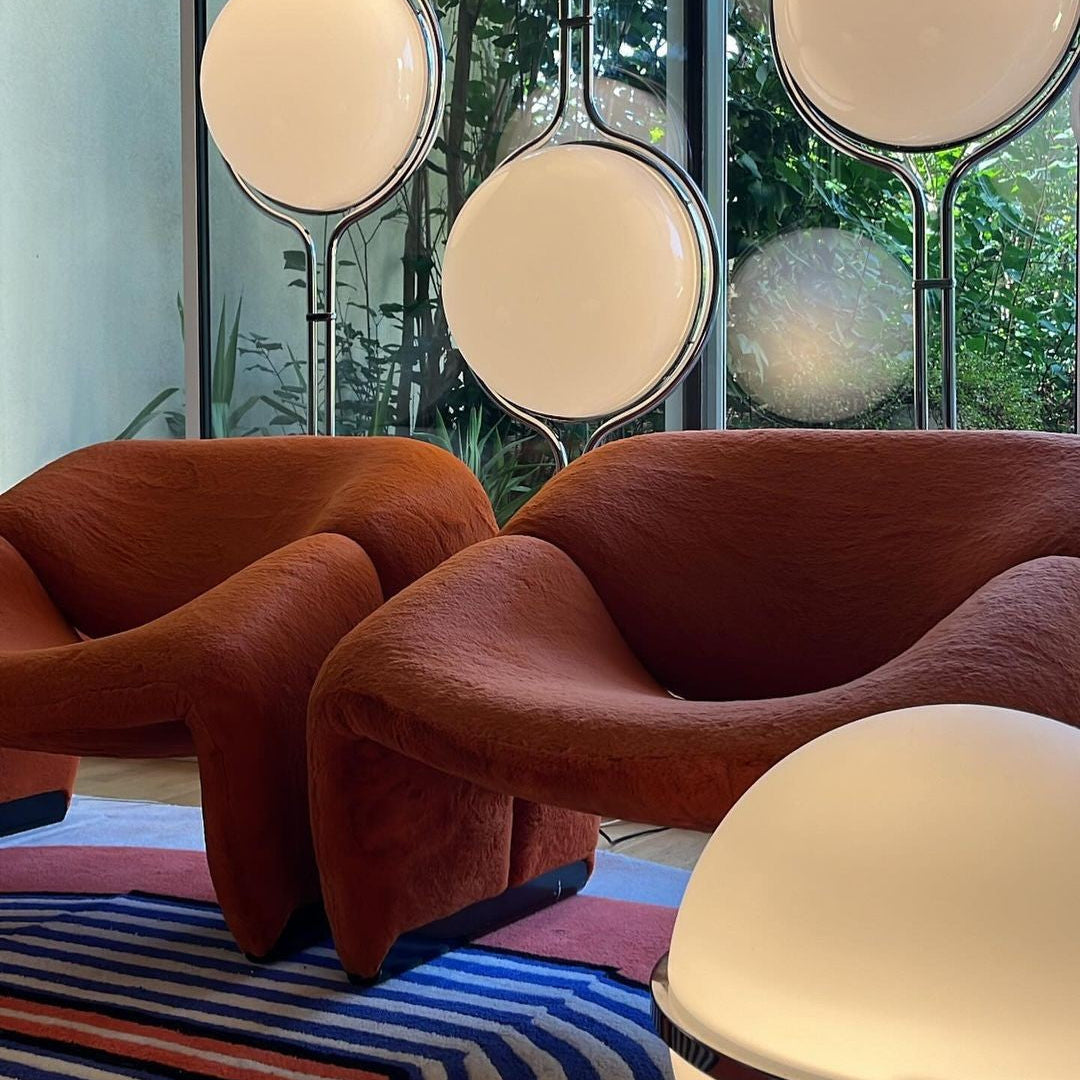Thesis: Europe holds a structural surplus of quality vintage design, while the United States, Gulf (Kuwait/GCC), and parts of Asia exhibit sustained demand gaps—and logistics (ocean/air) dynamics now make cross-border flows more predictable than the last two years.
1) Why Europe is “long” on vintage
A century of accumulation (post-war Italy, France, Nordics), dense dealer networks, and institutionalized flea/fair ecosystems mean Europe remains the richest sourcing ground for authentic mid-century and post-modern design. Marketplaces themselves are an indicator: the largest global platforms for high-end vintage list thousands of European dealers and inventories; many were created explicitly to digitize European stock for global buyers (e.g., 1stDibs: “bringing the magic of the Paris flea market online”).
Trade context: The EU is one of the world’s top exporting blocs; the United States is its #1 export destination, underscoring a long-running transatlantic trade corridor that vintage rides on (even if “used furniture” isn’t broken out separately in public dashboards). In 2024, the U.S. absorbed 20.6% of all EU goods exports; total EU goods exports to the U.S. reached €531.6B, up 5.5% YoY. While these are “all goods,” they frame capacity, routes, and customs familiarity that benefit bulky, higher-value interiors.
Inference: Europe’s deep dealer base + established EU→US lanes + buyer familiarity with European design = persistent exportable surplus.
2) Why the U.S., Kuwait/GCC, and parts of Asia are “short”
United States: A consumer market with high purchasing power and a strong design economy (LA/NY/Miami) but thinner domestic supply of original European mid-century and 1970s–80s Italian design. U.S. import appetite for furniture broadly is large—$26.38B in furniture imports in the first 11 months of 2024— and vintage/collectible sits at the high-margin end of that demand.
GCC (incl. Kuwait): Residential/hospitality build-out and luxury penetration are rising. Market trackers estimate GCC furniture in the $14–15B range in 2024, growing ~7–8% CAGR toward 2032/33, with a distinct luxury sub-segment expanding as well (CAGR >6%). This growth leans on imports; for collectible vintage specifically, European sourcing dominates.
Asia (select markets): While Asia produces vast volumes of new furniture, appetite for European vintage among HNW/affluent buyers and hospitality projects has increased, but local supply of authentic European originals is inherently limited—reinforcing import reliance from EU sellers.
Net effect: Demand > local supply in these regions, creating pricing power for verified European vintage with provenance.
3) The second-hand furniture market is real (and growing)
Multiple analysts peg the global second-hand furniture market at $34–40B in 2023–24, on track for $56–60B by 2030at ~7–8% CAGR. That steady expansion supports cross-border liquidity and professionalization (verification, condition grading, white-glove logistics).
4) Logistics: what changed since 2023—and why it matters
Ocean freight (containers): After the post-pandemic spikes and 2024 tariff/Red Sea volatility, spot rates have stabilized through mid-/late-2025. Drewry’s World Container Index sits around $2,104 per 40’ (first week of Sept 2025)—well off the 2021–22 extremes and recent spring peaks. Route snapshots show North Europe → U.S. East Coast spot levels near ~$2,000/FEU this summer, down ~25% vs. January. Translation: more predictable budgeting and healthier landed margins for transatlantic vintage shipments.
Air freight (for high-value, time-sensitive items): IATA data shows modest YoY growth in international cargo through spring 2025 with softening yields; June/July saw rates down ~2–2.5% YoY and a short-term slowdown in corridors touching North America/Middle East—useful for urgent small consignments (lighting, art, rarities)
when timing trumps cost.
Macro wildcards: Tariff policy shifts can create temporary front-loading spikes then rate drops; watch U.S. trade headlines. Red Sea diversions persist but capacity
additions have blunted impacts; rates on Asia–Europe lanes have even fallen 7%
recently despite longer routings. The signal: volatility is lower than 2021–2022;
planning windows are more reliable.
5) Practical playbook for cross-border vintage (Europe → US/GCC/Asia)
-
Cluster sourcing in EU hubs (France/Italy/Scandinavia + Benelux) to consolidate
LCL into FCL when possible—current FEU benchmarks favor bundling to improve
unit economics. (WCI context above.) -
Segmentation by mode:
◦ Ocean for bulky casegoods/seating sets;
◦ Air for high-value smalls (rare lighting, collectible objects) when
yield/lead-time justify. (IATA trend context.) -
Tell the story, not just the SKU: Provenance + condition grading raises sell-
through and ASPs on marketplaces; this is how platforms turned the “Paris flea”
into a global demand engine. -
Price to corridor realities: North Europe → U.S. East Coast lanes are currently the
most cost-predictable; GCC lanes benefit from robust project cargo and
hospitality flows (and budgets).
6) Bottom line
Supply: Europe is structurally rich in authentic vintage—decades of accumulation + dense dealer ecosystems.
Demand: U.S., Kuwait/GCC, and select Asian markets are structurally under-supplied for European originals and continue to build high-end residential/hospitality stock.
Logistics: Ocean rates have normalized vs. 2021–2022; air yields softened— together, they improve feasibilityfor cross-border vintage.
Market: Second-hand furniture is growing ~7–8% CAGR this decade, formalizing the category and rewarding players who can verify, ship, and storytell.
Strategic implication: For a platform like Curiouz, the winning move is to aggregate EU supply and programmatically route it into demand-short regions with logistics SLAs
and provenance standards. That is where spread (the gap between waste and worth)
becomes margin.




